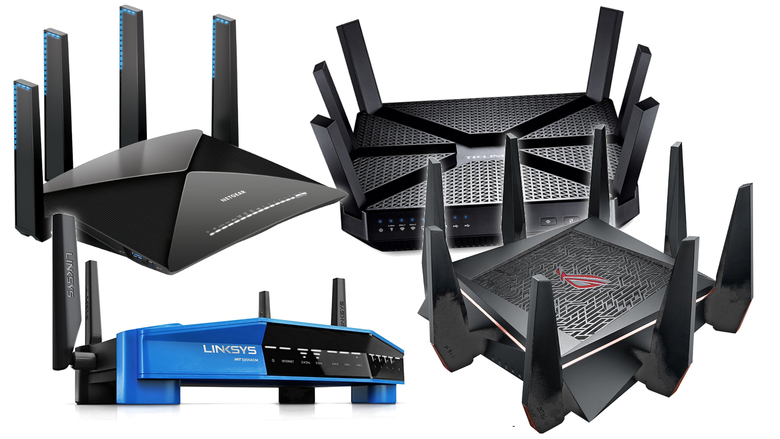
In most parts of the U.S. Gigabit Internet represents the highest consumer tier of web service available. Yes, select towns have multi-gig speeds but gigabit speeds still remain the gold standard for streaming 4K content, playing online games, and high-speed downloading. And the most important accessory you need for this is a gigabit router. Check out our picks for the best gigabit routers and you’ll see why it pays to max out your Internet service plan.

|
Amazon Customer Reviews
|
Price: $399.99 Shop at Amazon | Shop now Read our review |

|
Amazon Customer Reviews
|
Price: $328.88 Shop at Amazon | Shop now Read our review |
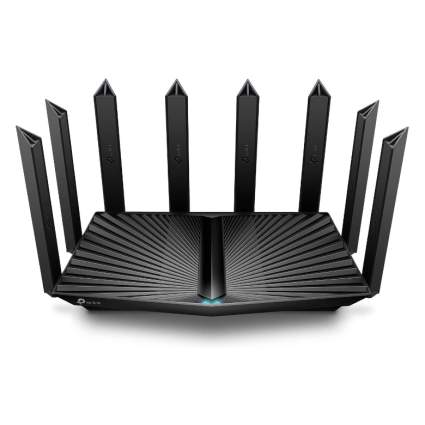
|
Amazon Customer Reviews
|
Price: $311.15 Shop at Amazon | Shop now Read our review |

|
Amazon Customer Reviews
|
Price: $299.99 Shop at Amazon | Shop now Read our review |
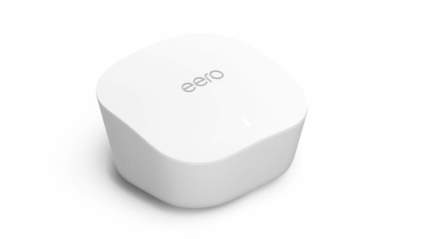
|
Amazon Customer Reviews
|
Price: $69.99 Shop at Amazon | Shop now Read our review |
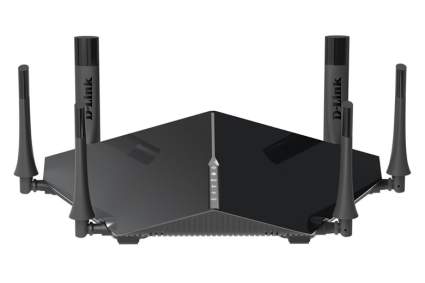
|
Amazon Customer Reviews
|
Price: $40.00 Shop at Amazon | Shop now Read our review |
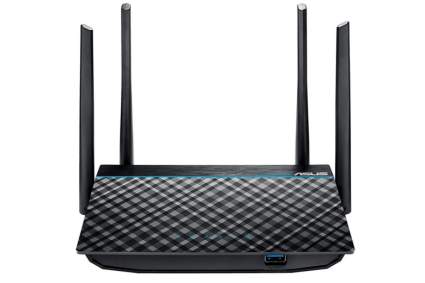
|
Amazon Customer Reviews
|
Price: $88.97 Shop at Amazon | Shop now Read our review |
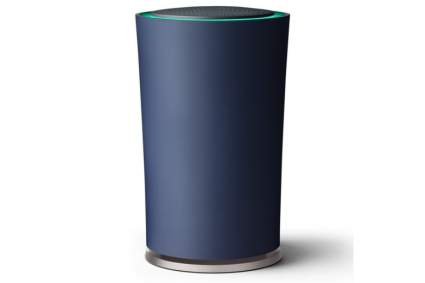
|
Amazon Customer Reviews
|
Price: $61.99 Shop at Amazon | Shop now Read our review |
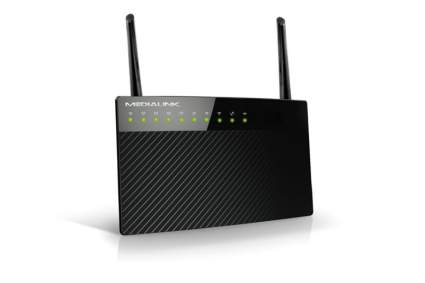
|
Amazon Customer Reviews
|
Price: $37.84 Shop at Amazon | Shop now Read our review |

|
Amazon Customer Reviews
|
Price: $88.98 Shop at Amazon | Shop now Read our review |
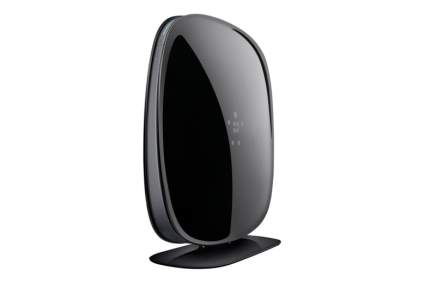
|
Amazon Customer Reviews
|
Price: $99.97 Shop at Amazon | Shop now Read our review |
-
1. Netgear Nighthawk AX8
Pros:- 8×8 MU-MIMO connections provide efficient data streaming
- WiFi 6 compatible
- Supports multi-gig speeds
Cons:- High price tag
- App GUI could be better
- Basic QoS
Currently, the Netgear Nighthawk AX8 stands out as one of the best consumer routers for a device-heavy household for a number of reasons. First of all, it is a Wi-Fi 6 router (also called 802.11ax), which actually supports multi-gig speeds. It also has tri-band wireless, which means it has an additional 5 GHz band on top of the standard 2.4 GHz and 5 GHz combination, and therefore supports upwards of 40 devices at once with ease. It also supports MU-MIMO (multi-user, multiple-input, multiple-output) for up to 8 devices without having to alternate streams, which eliminates one of the most common sources of local web traffic.
The Nighthawk AX8’s antennas can broadcast to an area of 2,500 square feet but this doesn’t factor in physical impediments like walls and interference from neighboring devices. That said, this is still enough coverage for a medium-to-large home. The AX8 has two USB 3.0 ports for NAS (Network Attached Storage) devices, a 2.5 Gbps WAN port, and four 1 Gbps ethernet ports. The last two ethernet ports support link aggregation to support multi-gig file transfer speeds across your local network. Theoretically, the 2.5 Gbps WAN port could be used to stream multi-gig Internet but ISPs aren’t even offering these kinds of speeds commercially yet.
This router is highly configurable under the hood, making it a great choice for the power user who likes to control how their home Internet traffic functions. It supports useful functions like parental controls, guest networks, DoS, firewalls, and VPNs. It supports QoS too but you have to manually choose which programs get prioritized. The biggest downside is that these are primarily accessed through the Netgear Nighthawk app, whose GUI leaves a lot to be desired from those who have known better.
As impressive as this router is, it is likely to be overkill for most home networks. That said, if you stream or game hard enough to warrant buying a router this expensive, then you might as well futureproof yourself for the next decade and go with the Nighthawk AX8.
Frequency bands: one 5GHz, one 2.4GHz
Max throughput speed: 6 Gbps
Processor: 1.8GHz 64bit quad-core
Ethernet ports: 2 gigabit, 2 gigabit with link aggregationFind more Netgear Nighthawk AX8 information and reviews here.
-
2. Asus RT-AC5300
Pros:- 2 USB 3.0 ports and 4 LAN ports
- 4×4 MU-MIMO connections provide efficient data streaming
- Game IPS monitors against suspicious network activity
Cons:- High price tag
- Requires firmware upgrades and configuration out of the box
- Glitchy UI
The Asus RT-AC5300 is designed to function in the most demanding situations. For most users, the Asus ROG RT-AC5300 is the definition of overkill. This Tri-Band router’s eight directional antennas make it look ridiculously similar to the Dark Tower that houses the Eye of Sauron.
This router is powerful enough to broadcast through large homes. As long as your walls aren’t too thickly insulated, you should have no need for a range extender in 90% of home setups. The RT-AC5300 has two 5GHz bands and one 2.4GHz band, which allows power users to sequester themselves on the two higher bandwidth wireless frequencies, causing less network clutter. Carefully distributing streaming devices allows the slower 2.4GHz band to be kept clear for less demanding Wi-Fi devices like smart home accessories.
This router also has MU-MIMO technology, which allows the router to establish separate unique connections to devices in your network. Normally, if two people are trying to stream video on the same network, a router will alternate between buffering both videos. MU-MIMO allows the RT-AC5300 to work more efficiently, creating four unique data streams for your heaviest users.
With a whopping eight 1 Gbps ethernet ports, the RT-AC5300 is practically a LAN switch. You can connect an unreasonable amount of devices to your network, or pair the last four ports for link aggregation to deliver wireless signals that surpass gigabit speeds. If your ISP offers service higher than 1 Gbps, you’ll need to connect a link aggregation-compatible modem using several gigabit ethernet cables. If they don’t, then this just makes the RT-AC5300 more future-proof. This device also has USB 3.0 ports to connect NAS devices, making it perfect for hosting cloud services like Plex.
It has all of your typical security features like WPA2 and WEP, but it also has Game IPS (Intrusion Prevention System) technology from Trend Micro. Game IPS monitors network traffic for suspicious activity and prevents intrusions into your network. Throw in the VPN Fusion software, which enables you to run a VPN and ordinary internet connection simultaneously, and you’d be hard-pressed to find a feature that this router is missing.
However, its price is highly prohibitive, considering you’ll need to spend hundreds of dollars on a DOCSIS 3.1 modem to unleash the full potential of any gigabit router. Additionally, the GT-AC5300 does not ship with the latest firmware, nor does it come configured for optimal performance. The UI makes configuring this router easy enough, but it will sometimes glitch out. When it does, you are left with odd issues like some of your connected Wi-Fi devices disappearing from the network map.
The plentiful feature set makes this a top pick for those seeking the most powerful home network, but if you are installing your own networking gear for the first time, you’re better off sticking to a more cost-efficient and simple router.
Frequency bands: one 2.4GHz, two 5 GHz
Max throughput speed: 5.3 Gbps
Processor: 1.8GHz 64bit quad-core
Ethernet ports: 4 -
3. TP-Link Archer AX6600
Pros:- WiFi 6 compatible
- Tri-band wireless
- Supports multi-gig speeds
- Easy setup
Cons:- Wi-Fi 6 is not widely supported yet
- Limited guest network settings
- Runs hot
If you are only now upgrading to gigabit Internet, then a future-proofed device like the Wi-Fi 6 compatible TP-Link Archer AX6600 might seem like overkill for your needs. But despite its tech being so new, the AX6600 has a price-to-performance ratio that makes it just as affordable as a midrange Wi-Fi 5 router.
If some of this terminology sounds new to you, allow me to explain. Wi-Fi 5 is the new term for 802.11ac, which has been the standard for home Internet since 2013. But growing demands for bandwidth have prompted the creation of 802.11ax, henceforth known as Wi-Fi 6. The AX6600 is one of the first Wi-Fi 6 devices to hit the market, and it promises an impressive throughput of up to 3 Gbps through a medium-sized home. Just keep in mind that this speed assumes the router is communicating with a Wi-Fi 6 compatible device, of which there are currently few. The iPhone 11 and the Samsung Galaxy S10 families were among the first wave, though, so you may already have one without even knowing.
Of course, this router is also fully backward compatible with Wi-Fi 5 devices, but its max throughput will be limited to only about 1.2 Gbps, which is still good enough for gigabit speeds. These speeds also assume your router is optimally placed and that you have a modem that supports the appropriate throughput as well. But no matter which Wi-Fi standard you are using, the AX6600 is able to support an impressive level of simultaneous traffic thanks to its tri-band antenna system and OFDMA technology. This router also has MU-MIMO technology.
The Archer AX6600 is fairly easy to set up. You can use the TP-Link Tether app or a more classic web UI login and the whole process will only take a few minutes. The router has your standard suite of settings to create user profiles, parental controls, and monitor network traffic. These settings fall short in a couple of places though, so power users who want to run both a guest network and a parallel home network for IOT devices will be out of luck when using the stock UI. I’ve seen better QoS setups too.
As for connectivity, the AX6600 has four 1 Gbps LAN ports as well as a USB 3.0 and a USB 2.0 port for use with a NAS device. It also has a 2.5 Gbps WAN port to support multi-gig Internet speeds where available. This feature isn’t widely available from ISPs yet but it is still nice to see. It also has a 1 Gbps WAN port for redundancy. All around, the AX6600 is a powerful and affordable router that will future-proof your home network for years to come.
Frequency bands: two AX 2.4 GHz, one AX 5 GHz
Max throughput speed: 3 Gbps
Processor: 1.5 GHz Quad-Core
Ethernet ports: 4Find more TP-Link Archer AX6600 information and reviews here.
-
4. Linksys WRT3200ACM
Pros:- 160MHz channels provide added bandwidth
- 4×4 MU-MIMO connections provide efficient data streaming
- Open source ready
Cons:- Weak 2.4GHz signal
- Limited settings in stock UI
- Open source firmware is still not optimized for this model
The Linksys WRT3200ACM is absolutely legendary among home network enthusiasts: one of the best gigabit routers to offer open source compatibility.
What is open source software? If you’re asking that, you can pretty much scroll on to the next pick. If you’re curious and still reading, it is custom third-party firmware like OpenWrt and DD-WRT that can reprogram your router to enhance and unlock certain features of your router.
This means you have the freedom to turn this router into a wireless adapter for a PC, or into a wireless bridge for another device. Or if a future firmware update causes a bug in your setup, you can revert to a whole new platform.
That last situation isn’t likely to happen, but it is still a useful feature if you have complex needs for your home network.
The stock UI is simple and clean, but somewhat limiting for those who are looking to perform these advanced features. Casual users will also appreciate the option to use the Smart Wi-Fi app for Android or iOS to control your home network settings.
Settings include standard options like security features, guest network setup, and changing your network name and password. Without flashing new firmware, you won’t find more complicated features like limiting a device to a certain band or enabling QoS prioritization.
Most users will be pleased with its performance out of the box, though. The 5GHz band of this router operates through 160MHz channels, effectively doubling its max throughput to 2.6Gbps. Conventional routers operate at 80MHz.
For those streaming heavy content like 4K or VR video, 4×4 MU-MIMO support will ensure that your network activity doesn’t negatively affect others on your network by giving you and the next three heaviest users their own unique connection to the router.
Its 2.4GHz signal, however, does not receive any special attention and is weak in comparison.
The WRT3200ACM also supports a standard amount of hard-wired devices. It has four gigabit ethernet ports (aside from the WAN port that connects to the modem).
It also has a USB 3.0 port and an eSATA port, granting extra flexibility in choosing a hard drive for use as a NAS.
On the exterior, the WRT3200ACM is housed in a lifted body that encourages air flow, and it has a useful LED strip that can be easily turned off.
Ultimately, there is a lot to like about this router. Its open source software support may still need some kinks ironed out, but you’d be hard-pressed to find an open source router that packs more power than this one.
Frequency bands: one 2.4GHz, one 5 GHz
Max throughput speed: 3.2 Gbps
Processor: 1.8 GHz dual-core
Ethernet ports: 4 -
5. Amazon eero Pro Mesh WiFi router
Pros:- Tri-band wireless
- Alexa and Apple Home Kit compatible
- Easy setup
Cons:- Only 2 ethernet ports
- Not the best price-to-performance
- Only supports one SSID
If you value ease of use and straightforward setup above all else, the Amazon eero Pro Mesh WiFi router is a great option for you. This router is designed to work with easy mobile interfaces like Amazon’s Alexa and Apple HomeKit. That makes it perfect for networking neophytes who also want good enough performance for gigabit Internet.
Its standout feature is its mesh network compatibility, which allows you to pair multiple eero Pro units to create a singular wireless network that is propogated throughout your house. For a more substantial explanation of mesh WiFi, check out this helpful article over at Tomsguide.
Whichever app you use will help guide you through setup and placement and the router can even configure certain settings on its own too. But while this may be a boon to some, it will be the bane of others. This router will come off as incredibly feature-light to power users. It does not support VLAN or multiple SSIDs. And while the tri-band network is nice for dispersing device traffic, the router automatically assigns networks for each device so don’t expect comprehensive QoS.
But if that last paragraph sounded like gibberish to you, then you will still likely get what you need out of this router. Features like guest networks and parental controls are easily accessible. The router also works with mesh systems so you can easily expand your network with another eero device. That won’t be too likely, though, as it covers an estimated 1,750 square feet on its own
Frequency bands: one 2.4GHz, one 5.2 GHz, one 5.8 GHz
Max throughput speed: 1.7 Gbps
Processor: 700 MHz quad-core processor
Ethernet ports: 2Find more Amazon eero Pro Mesh WiFi router information and reviews here.
-
6. D-Link DIR-3040-US AC3200
Pros:- High-performance beamforming antennas
- 2×2 MU-MIMO connections provide efficient data streaming
- Tri-band wireless
Cons:- High price tag
- Runs hot
- Glitchy UI
It is easily one of the best routers for gaming, D-Link’s DIR-3040-US provides massive throughput speeds that compete with top brands like Netgear and Linksys. This tri-band router has a max throughput of 3 Gbps, combined across two 5GHz bands and one 2.4GHz band. It has 3×3 MU-MIMO support and offers low-latency streaming.
Its QoS traffic prioritization is extensive and helps ensure that your bandwidth is used in the most efficient way. One of its best features is its powerful wireless signal. Its six adjustable antennas can cover a larger than average area thanks to the use of AC SmartBeam technology. With AC SmartBeam, the router can track the location of devices in your house (including other routers in a mesh system), and provide them extra signal in their direction. It’s basically their proprietary beamforming, and it kicks butt.
The UI is about standard for this type of device and offers most of the settings that you need. Some will prefer to use D-Link’s Quick Router Setup (QRS) app, but this stripped down version is far less useful for advanced users.
The DIR-3040-US has one USB 3.0 port and one USB 2.0 port to connect to a NAS device. It offers a standard four 1-gigabit ethernet ports. This router doesn’t do much to stand out from the competition, but its great wireless range and better than average UI may win you over yet.
Frequency bands: one 2.4GHz, two 5GHz
Max throughput speed: 3 Gbps
Processor: 1Ghz dual-core
Ethernet ports: 4Find more D-Link DIR-890L AC3200 information and reviews here.
-
7. Asus RT-ACRH13
Pros:- 2×2 MU-MIMO connections provide efficient data streaming
- Easy setup
- Detailed QOS bandwidth prioritization
Cons:- Does not support multi gigabit speeds
- Slow to reboot
- Shorter range than others
You can leave it to the Asus RT-ACRH13 to prove why you don’t need a multi-gig router to get the most out of your Internet service.
Setup is easy, whether you use the online UI or the Asus Router App on Android or iOS. You have access to a myriad of features for security, guest networks, QOS, VPN support, NAS configuration, and more.
The budget-conscious Asus is a dual-band router with a 2GHz band and one 5GHz band. Technically, the 5GHz band on its own can only send about 800Mbps to connected devices, but less active wireless devices can glean an additional 400Mbps or so from the 2.4GHz band.
Despite these not being the fastest achievable figures, you won’t hear many folks complain about 800Mbps down.
And even with the value price this router comes at, it doesn’t skimp on extra features. It supports 2×2 MU-MIMO, providing a direct connection for the two biggest network hogs. No one has to share.
The one downside is that should you need to power cycle your device, startup takes a ridiculously long time.
The device has a single USB 3.0 port to connect a NAS drive, and four gigabit ethernet ports to connect other networked devices.
Its wireless range is respectably large, and the device is wall mountable, allowing you to position it out of the way no matter what part of your house gets the best coverage.
Frequency bands: one 2.4GHz, one 5 GHz
Max throughput speed: 1.2 Gbps
Processor: A7 quad-core
Ethernet ports: 4 -
8. Google OnHub AC1900
Pros:- High-performance internal antennas
- Smart home integration support
- Easy setup
Cons:- Does not support multi gigabit speeds
- Only one LAN port
- No NAS support
TP-Link’s OnHub AC1900 is a home router that is designed to work with the Google On.Here platform to give your router a more relevant place in your emergent smart home. However, with its cylindrical design, subtle lighting, and built-in Bluetooth speaker, the OnHub looks more like an entertainment device than a wireless router.
Beneath its stylish casing, the OnHub houses thirteen internal antennas that propagate a powerful Wi-Fi network throughout your house.
But these built-in oddities are more to demonstrate the versatility of the router than for actual use. Because seriously, who wants to play music off their router instead of their PC speakers?
The real reason to draw your eyes with these features is to bring your attention to the fact that is a smart home hub as well as a router. The router is setup via On.Here, a feature of Google Wi-Fi networks that can be accessed by typing it into your URL bar.
From On.Here you can connect smart home devices through the same interface that you would set up your router. You can also use the Google On app on Android.
It’s all quite smart. And that’s the name of the game for the menu layout as well. You have a simplified display that allows you to adjust the device’s LED brightness, switch its wireless modes, prioritize device traffic, enable a guest network, and more.
There are some things that this router doesn’t do as smart, however. One such example is the complete lack of ethernet switch on this device. There is one ethernet out port, which means you need a separate ethernet switch if you want to connect multiple devices.
Another downside is that the device’s one USB 3.0 port is only for firmware updates and does not support a NAS device. Personally, I think they are just tricking you into using Google Play Music.
However, if this lack of extra features doesn’t concern you, you will still have a high-performing router.
This router is capable of handling over one hundred concurrently connected devices, so even the deepest apartment dwellers need not worry.
If you are looking for an easy to setup router that can double as a smart home hub, then it will be a great while until you find something more suitable than the Google OnHub.
Frequency bands: one 2.4GHz, one 5 GHz
Max throughput speed: 1.9 Gbps
Processor: IPQ8064 1.4GHz dual-core
Ethernet ports: 1 -
9. Medialink MLWR-AC1200
Pros:- High-performance beamforming antennas
- Easy setup
- Great customer service
Cons:- No USB 3.0 port
- No 2.4GHz network
- Does not support multi gigabit speeds
The Medialink MLWR-AC1200 is a budget gigabit router with a highly functional UI that allows easy editing of features like VPN, port forwarding, dynamic DNS, and QoS optimization. It offers the same basic feature set as our pricier picks, albeit with a less recognized brand backing these features.
For starters, this router delivers as good of wireless range as the RT-ACRH13 if not better. It claims to broadcast at the max power allowed by the FCC, but this stat will be affected by the layout of your house and the material your walls are made from.
It also offers the same max throughput across two wireless bands, one 2.4GHz, and one 5GHz. They also have the same selection of 4 gigabit ethernet ports and one USB 3.0 port to connect networked devices. Though I haven’t found a need to call, I’ve read multiple online customer reviews that state US-based Medialink support is really helpful.
Frequency bands: one 5 GHz
Max throughput speed: 1.2 Gbps
Processor: Cortex-A7 CPU
Ethernet ports: 4Find more Medialink MLWR-AC1200 information and reviews here.
-
10. Linksys Max Stream EA7300
Pros:- 1×1 MU-MIMO connections provide efficient data streaming
- High-performance beamforming antennas
- Easy setup
Cons:- Does not support multi gigabit speeds
- Limited settings in stock UI
- Shorter wireless range
The Linksys Max Stream EA7300 is a well-rounded option for a home that requires some dedicated power for gaming and streaming, without going overboard.
Its dual-band setup is best for the average household. It offers a baseline 2.4GHz signal across a wide connectivity area, thanks to beamforming technology that focus the signal where it needs to go. It also has a faster 5GHz signal for devices dedicated to gaming or streaming.
The two frequency bands combine to offer a total max transmission rate of 1.7Gbps, with a 1×1 MU-MIMO line to streamline the buffering process for a single device.
As for connectivity, this router has a standard four ethernet ports, plus a USB 3.0 for networked media.
Setting up the router is easier than you would expect. It only takes a few steps to get started, and once you reach the web UI, you have easy access to features like parental controls, guest passwords, and firewall settings.
More advanced features like VPN connections and bandwidth utilization are nowhere to be found.
Should that happen to be a dealbreaker for you, there are plenty of other routers in this price range that will do the job. However, if they aren’t, then this should be a top consideration if you are looking for a midrange router.
Frequency bands: one 2.4GHz, two 5 GHz
Max throughput speed: 1.7 Gbps
Processor: Dual-Core
Ethernet ports: 4Find more Medialink MLWR-AC1200 information and reviews here.
-
11. Belkin AC1200 F9K1123
Pros:- Boosted 2.4GHz range and speed
- Self-healing feature automatically power cycles device
- Low price tag
Cons:- Requires firmware upgrades and configuration out of the box
- Does not support multi gigabit speeds
- Runs hot
The Belkin AC1200 F9K1123 is a user-friendly budget router that delivers solid throughput speeds while keeping things simple for those who are new at managing a home Wi-Fi network. One unique feature is “self-healing”, which allows you to schedule automatic reboots to keep the device running smoothly. This may help prevent the unusual hangups that all wireless devices are prone to.
In terms of throughput per dollar, it doesn’t get better than this one. This dual-band router has one 2.4GHz band for low priority devices and one 5GHz band to deliver true gigabit speeds. Its 2.4GHz band has increased bandwidth, which can be nice for devices that are far from your router. For closer devices, the 5GHz band is still optimal.
This device has a serviceable UI, and it allows you to easily make changes to security, parental controls, QoS optimization, and more. This router doesn’t come perfectly configured, nor does it always ship with the latest firmware, but updates via its mounted USB 3.0 port are fairly painless. Though you shouldn’t expect miracles from it, the Belkin F9K1123 is one of the best cheap routers for gigabit Internet.
Frequency bands: one 2.4GHz, one 5 GHz
Max throughput speed: 1.2 Gbps
Processor: (Not listed)
Ethernet ports: 4Find more Belkin AC1200 F9K1123 information and reviews here.
How Did We Pick the Best Gigabit Routers?
Whether you are shopping to future-proof your home network or just looking for the best value, we’ve laid out the most important criteria for you to consider when picking the best gigabit router for you.
At the top of the list are a high max data throughput and a large wireless range. Our preference goes to routers that use MU-MIMO technology to create prioritized connections to the heaviest users.
A good router should also have a powerful processor. Equally important is a good selection of ports. A USB 3.0 port is a must-have if you want to use a NAS (network-attached storage) device. Additionally, you want a minimum of four ethernet ports if you plan to hardwire devices or do an old-school bridge setup.
One final note is that the routers we reviewed are meant to work with cable modems, and won’t work for FTTH (fiber to the home) services. FTTN (fiber to the node) and cable services, however, will generally work with any of our picks regardless of your ISP.
Do You Really Need Gigabit Internet?
A wise person once said, "if it ain't broke, don't fix it." And that is usually the case for buying new networking gear. But how do you know if you stand to gain from upgrading your wireless gear and Internet service?
To determine if you would benefit from gigabit internet, then you should start by taking inventory of your current network. How many devices do you have connected to your network and how many does your router support? Do these devices have a download speed that matches what you pay? How much time do you spend waiting for content to buffer?
Once you consider these questions the answer should be pretty clear. If you rarely encounter bottlenecks when browsing or streaming then you probably don't need gigabit Internet and could likely save some money by downgrading your internet plan. If, however, you do find your speeds coming up short, then it is definitely time to upgrade your service and/or equipment.
Should You Rent or Buy Your Router?
If you are a networking neophyte, it can be tempting to just rent your equipment from your ISP and skip the whole shopping process. However, we can't come up with any good reason to rent a piece of equipment that you could own for cheaper.
Many gigabit services will charge you around $10 a month to rent a modem/router, which adds up to $120 a year. Getting a new modem and router would cost an average of $300, which is less than three years of equipment rental fees. (It could be done for less too, but cheaper routers will need to be upgraded sooner.)
Plus, rental equipment from companies like Xfinity, AT&T, and Charter is usually average at best. That means you are just as likely to improve your speed as you are to save money.
There are many great consumer wireless routers that can handle Gigabit Internet so it is in your best interest to ditch the monthly rental fee and buy your networking gear outright.